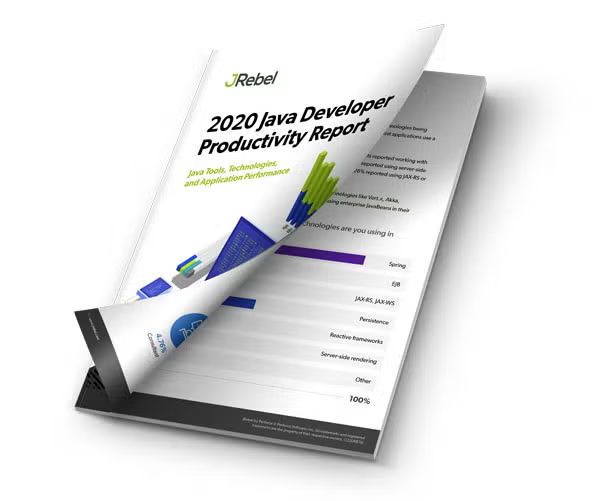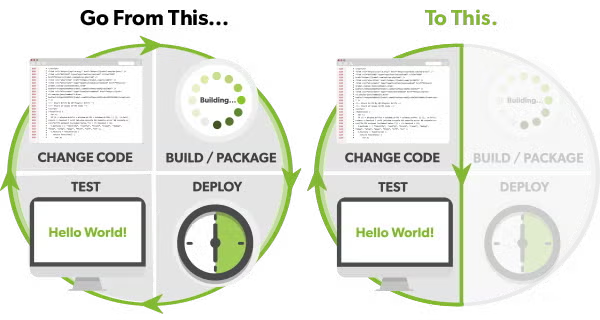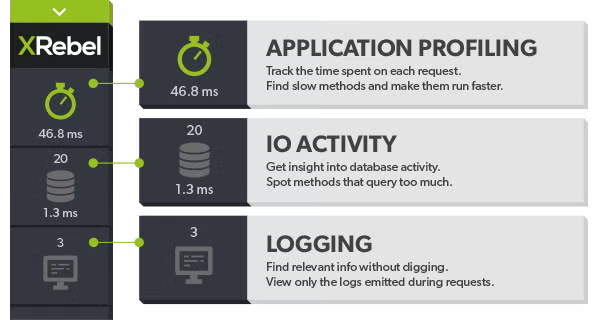According to our 2021 Java Developer Productivity Survey, 66% of Java developers are working in, or actively transitioning to microservices. It’s for good reason, too: Java microservices offer a host of benefits that can help developers prepare for the rapidly changing and expanding needs that define modern application development.
Back to topWhat Are Microservices?
The microservices architecture is characterized by small, loosely-coupled services that comprise an application. Offering the ability to work in multiple technologies and languages within a single application, microservices give a degree of a flexibility that its architectural predecessor, the monolith, cannot.
Looking for a good starting point? Be sure to check out the video and webinars from Rod Cope, below.
- Microservices vs. Mini vs. Monoliths: Winner Takes All?
- Making the Move to Microservices for Java Applications
- Igniting Your Digital Transformation With Microservices
Table of Contents
About Microservices in Java
The microservices architecture is characterized by small, loosely-coupled services that comprise an application. Offering the ability to work in multiple technologies and languages within a single application, microservices offer a degree of a flexibility that its architectural predecessor, the monolith, cannot.
Looking for a good starting point? Be sure to check out our microservices webinars from Rod Cope:
- Microservices vs. Mini vs. Monoliths: Winner Takes All?
- Making the Move to Microservices for Java Applications
- Igniting Your Digital Transformation With Microservices
Want to learn more about the history of containerization technologies, and why containers will continue to be relevant to developers for years to come? This webinar from Rod Cope, Containers: From Chroots to Cluster Computing, is well worth your time.
When to Use Microservices in Java
As mentioned previously, microservices can offer developers slough of new advantages. But in some cases, microservices aren’t going to fix underlying issues within an application. Our article on when to use microservices in Java development gives some insight into when developers should consider microservices, and when a monolithic or “miniservice” architecture may be more advantageous.
2020 Java Developer Productivity Report
 Back to top
Back to top
Deploying Microservices in Java
Once development teams have decided to transition their application from monolith to microservices, the next challenge is determining how to deploy. Should developers deploy their application all at once in a “big bang” approach? Or deploy as new features are implemented? For those experiencing this dilemma, our article on deploying microservices in Java gives added insight into the process.
Back to topJava Microservices Development Efficiency
One popular misconception for microservices is that, because they’re small and fast, they don’t have significant rebuild and redeploy times. But, according to our 2020 Java Developer Productivity Survey, 49% of developers reported redeploy times of over one minute per redeploy, with almost 20% experiencing redeploy times of over three minutes per redeploy.
Streamline Microservices Development
For Java microservices development teams looking for an increase in development efficiency, using a Java productivity solution like JRebel can help to significantly increase microservices development speed.
With JRebel, developers skip rebuilds and redeploys — meaning more time spent coding, and less time spent waiting.
 Back to top
Back to top
Finding the Right Java Microservices Framework
Picking the right framework for Java microservices application can be a tall order for development teams. Each framework offers benefits that can complement specific application functionalities. But deciding between a framework that fits the needs of the application, and a proven framework like Spring Boot, can leave developers in a bind.
Docker Swarm vs. Kubernetes
So where does the loosely-coupled part of microservices come in to play? Microservices container orchestration services dictate how microservices interact with one another. But, until recently, there was some debate about which technology, Kubernetes vs. Docker Swarm, was the ideal for most developers. Today, container orchestration is synonymous with Kubernetes.
Back to topTesting Microservices in Java
The roadmap for how development teams should test microservices isn’t canon, yet. And, given the already complicated nature of testing monolithic Java applications, adding a new layer of architectural complexity can make 1:1 adaptations of existing strategies ineffective for microservices. So, what’s the solution?
Testing during development! Embracing the DevOps philosophy of “test early, test often” can be an invaluable part of testing microservices in Java.
Back to topTesting Microservices During Development
For developers who want to start testing microservices during development, XRebel can be a valuable addition. It enables developers to understand how code in one microservice impacts code in another, and can have a dramatic, positive impact on individual microservice and overarching application performance.
Easily Understand and Improve Microservices Performance During Development
With XRebel, developers see how code in one microservices impacts code in another – leading to better performing microservices-based applications.
 Back to top
Back to top
Additional Resources
Looking for additional resources on microservices in Java? Be sure to check out one of our recorded webinars, white papers, or blogs.
Recorded Webinars
- Containers: From Chroots to Cluster Computing
- Improving Performance in Java Microservices
- Igniting Your Digital Transformation With Microservices
- Making the Move to Microservices for Java Applications
- Microservices vs. Mini vs. Monoliths: Winner Takes All
- Eight Ways to Improve Microservices Performance
- Engineering for Microservices Resiliency
White Papers
- Developer's Guide to Microservices Performance
- 2020 Java Developer Productivity Report
- Microservices Trends in Java Development Report
- Why Should Businesses Care About Microservices?
Blogs and Other Resources
- Pros and Cons of Java Containerization
- What Is Containerization?
- How to Find Microservices Performance Issues
- Common Performance Problems With Microservices
- Guide to Microservices Resilience Patterns
- Docker Microservices in Java
- 2020 Java Microservices Report
- Testing Microservices in Java
- Kubernetes vs. Docker Swarm
- Popular Java Microservices Frameworks
- When to Use Microservices in Java
- Deploying Microservices in Java
- Microservices in Java: Survey Highlights
- Java Microservices With Spring
- Exploring Microservices With Play and Akka
- Building Microservices with Spring Cloud
- Microservices: What, Why, and How
- Microservices and APIs